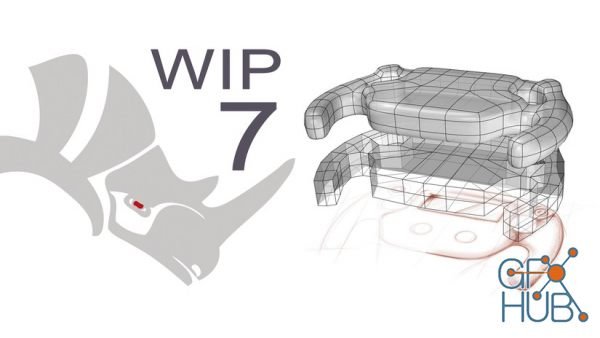

- #Rhino for mac no animation tools install#
- #Rhino for mac no animation tools update#
- #Rhino for mac no animation tools software#
Note that unlike the layers it creates in the Layers panel of the Unreal Editor, this hierarchy of Actors is not flattened. For more information on using Attribute User Text, see Attribute User Text in the Rhino documentationĭatasmith builds its scene hierarchy from your Rhino model as follows:įor each layer in your Rhino scene, Datasmith creates an Actor in UE4 to act as the parent for all objects on that layer.

When imported into Unreal Engine via Datasmith, each Named View becomes a separate CineCameraActor in the Scene.ĭata is entered into the table as a key value pair. Named Views in Rhino are the equivalent of Cameras in Unreal Engine. For details, see Modifying a Datasmith Master Material.

#Rhino for mac no animation tools update#
Consider duplicating a parent Material before you modify it, make your changes to the duplicate, then finally update specific Material Instances to use your new duplicate as their parent. Note that changing a parent Material also changes all Material Instances that inherit from that parent automatically. You can edit these parent Materials if you want greater control over the Material graphs that define how each surface appears, expose additional parameters to child instances, or change the way the exposed parameters are taken into account during rendering. Each of these is the parent of at least one of the Material Assets in the Materials folder. This makes the visual result of your import into the Unreal Engine match the result of rendering in Rhino as closely as possible.ĭatasmith also creates a set of parent Materials in the Materials/Master folder. It ignores Rhino display colors completely. Datasmith assigns these Material Assets to the Static Mesh Assets it creates to shade their surfaces the same way they appear in your Rhino renders.ĭatasmith only imports materials from Rhino objects into the Unreal Engine. You can change these exposed properties to modify the way the Material looks when applied to a surface. Each Material is then placed in the Materials folder next to your Datasmith Scene Asset.Įach Material in the Materials folder is a Material Instance that exposes properties set in the Rhino file: color values, texture maps, and so on. Datasmith will utilize the Rhino tessellation options located in File > Properties > Document Properties | Mesh:įor a complete discussion and recommended solutions, see About the Datasmith Import Process.įor each different surface material that Datasmith finds in your Rhino scene, it creates a separate Material Asset in UE4 with the same name. If you have objects in your Rhino file that are defined as parametric surfaces, or NURBS, these surfaces need to be transformed, or tessellated, into triangular meshes. Unreal Engine always renders objects using triangular meshes. Wherever possible, we recommend taking advantage of this by making any repeating elements in your scene (such as windows, doors, or chairs) into blocks in Rhino.įor details, see the Rhino documentation. It also makes it easier to manage the number of Static Meshes in your Content Browser. This is typically better for the runtime memory requirements and performance of your Project. It then places multiple instances of those Static Meshes into the scene. When Datasmith detects multiple instances of the same block in your Rhino scene, it only creates one set of Static Mesh Assets for the geometry in that block. Installing the Datasmith plugin adds a dockable toolbar in Rhino.
#Rhino for mac no animation tools software#
To read more about other types of Datasmith workflows, see Datasmith Supported Software and File Types. For more information, see Using Datasmith Direct Link documentation. This way, you don't need to manually re-import the entire scene into UE4 every time you want to make a change. To preview changes to your Rhino scene in UE4 in real time, you can set up a Datasmith DirectLink between the two. See Importing Datasmith Content into Unreal Engine 4. Use the Datasmith importer available in the Toolbar of the Unreal Editor to import your. See Exporting Datasmith Content from Rhino. See Installing the Datasmith Exporter for Rhino.Įxport your Rhino content using the Save As or Export process.
#Rhino for mac no animation tools install#
Install the Datasmith Exporter plugin for Rhino. This means that to get your Rhino content into UE4 using Datasmith, you need to: If you plan to use Datasmith to import scenes from Rhino into Unreal Editor, reading this page can help you understand how your scene is translated, and how you can work with the results in Unreal Editor.ĭatasmith uses an export workflow for Rhino. It follows the basic process outlined in the Datasmith Overview and About the Datasmith Import Process, but adds some special translation behavior that is specific to Rhino. This page describes how Datasmith imports scenes from McNeel Rhinoceros (Rhino) into Unreal Engine 4 (UE4).


 0 kommentar(er)
0 kommentar(er)
